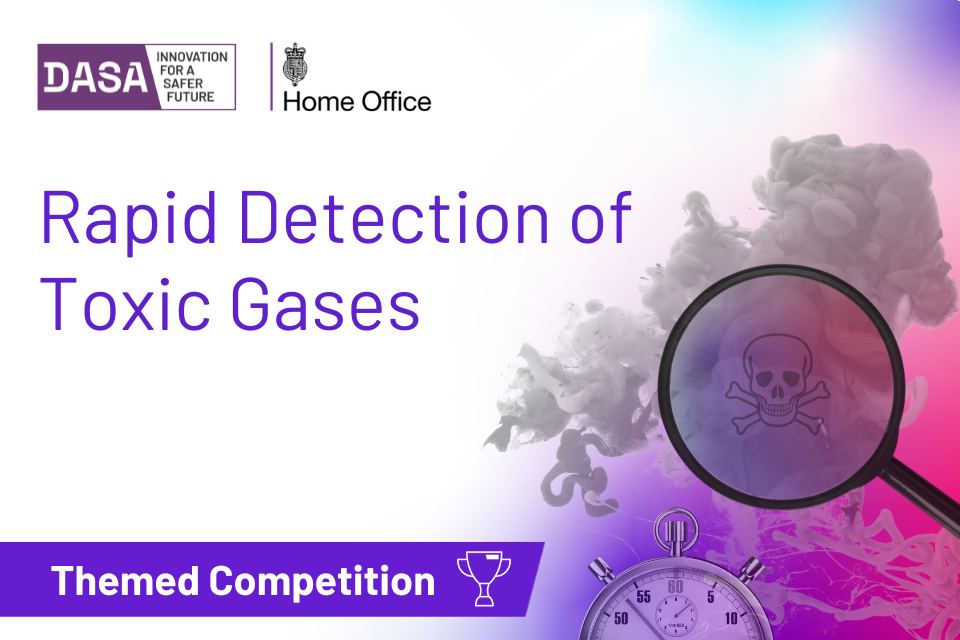Competition: Rapid Detection of Toxic Gases
We are seeking proposals that identify and develop new technologies that can be used to detect a range of toxic gases in public areas
Documents
Details

This Defence and Security Accelerator (DASA) competition is run on behalf of the Home Office and supported by US Department of Homeland Security. We are seeking proposals that enable the rapid detection of toxic gases to improve public safety by providing an early warning to indicate unsafe levels of toxic gases in busy spaces.
The rapid release of toxic gas in an enclosed or semi-enclosed environment may happen through accident, equipment malfunction or malicious intent. The impact would outpace existing safety procedures and potentially lead to adverse health effects for those in the vicinity. Therefore, we are seeking new technological solutions to this health, safety, and security challenge.
We are particularly interested in novel technology developments outside of commonly used techniques for gas detection such as electrochemical sensors, metal oxide sensor or spectroscopic methods. However, novel applications or development based on current techniques are still of interest and are in scope for this competition.
We encourage proposals where the innovation should output a Technology Readiness Level (TRL) 3-4.
Successful proposals will present credible plans for progressing new technologies which have the possibility of networking to future smart facility management systems.
Submission deadline
12:00 Midday on 28 March 2024 (GMT)
Where do I submit my proposal?
Via the DASA Online Submission Service for which you will require an account. Only proposals submitted through the DASA Online Submission Service will be accepted.
Total funding available
The total possible funding available for Phase 1 of this competition is £1.6 million (excluding VAT).
We are expecting to fund multiple proposals under this competition.
Additional funding for further phases to increase TRL may be available. If there is a future phase, it will be open to applications from all innovators and not just those that submitted Phase 1 successful bids.
Updates to this page
-
Added a couple of explaining sentences to 2 clarifications
-
Additional Q&A's added for further information and clarity of proposal
-
Slides and clarifications published following webinar event on February 7
-
First published.